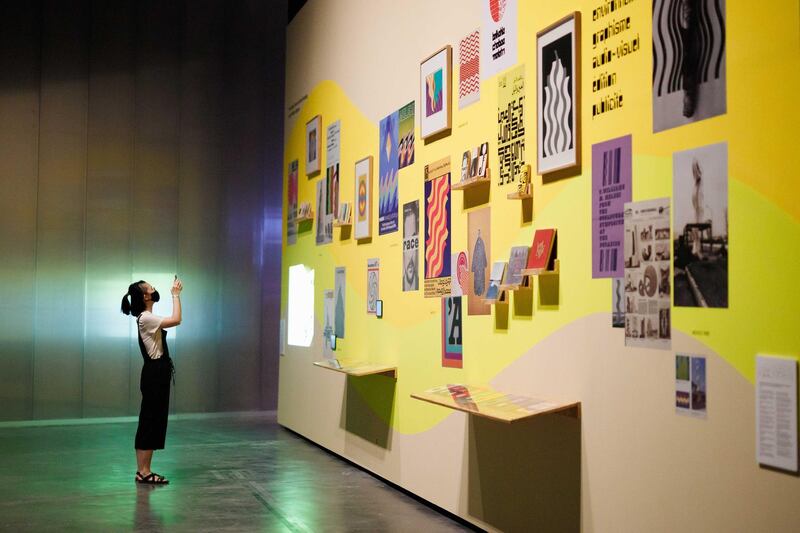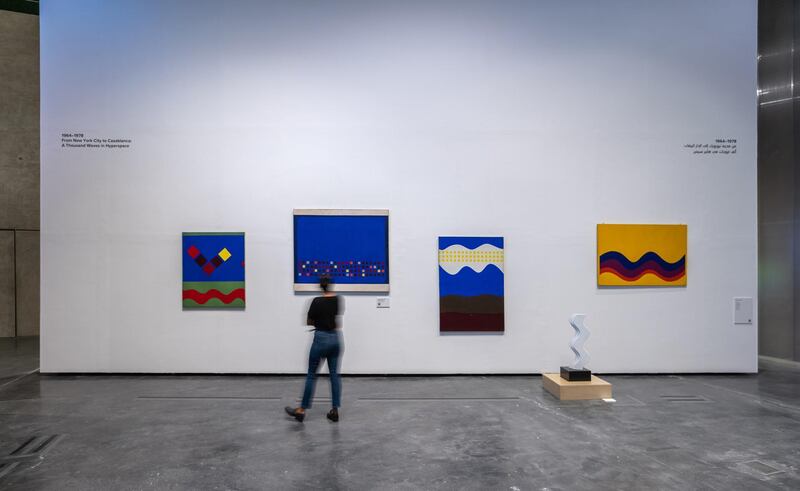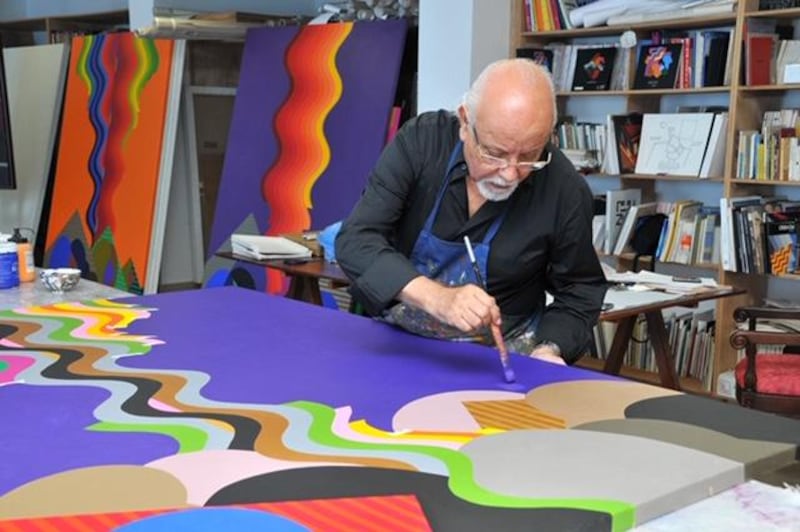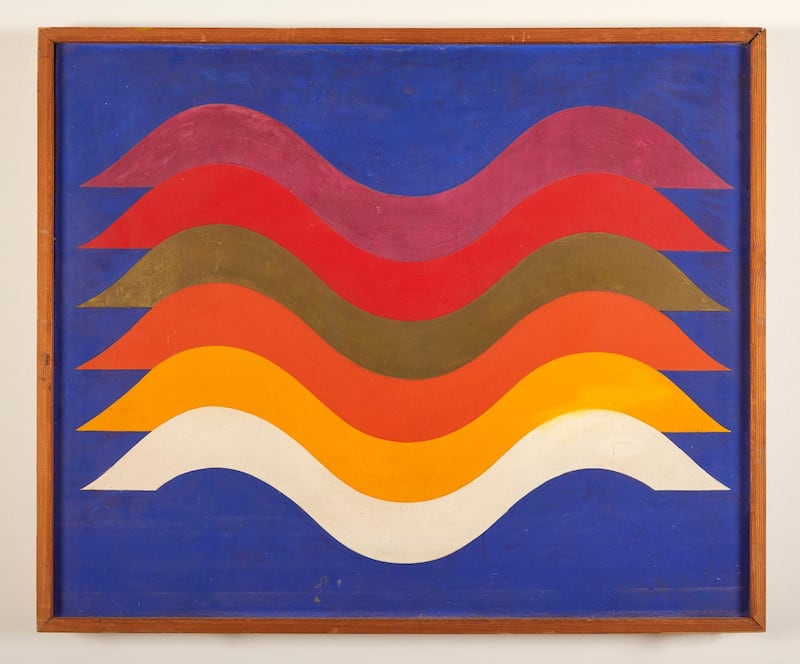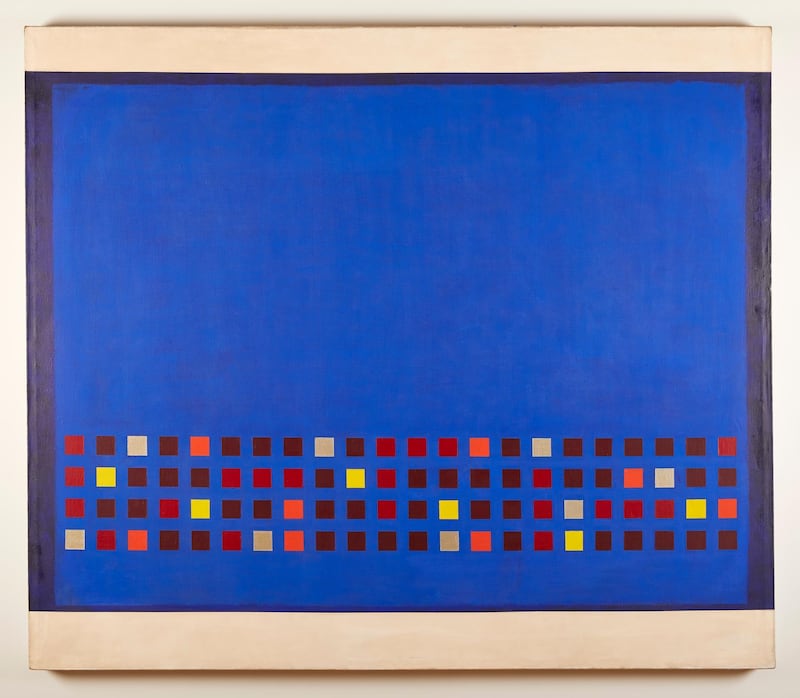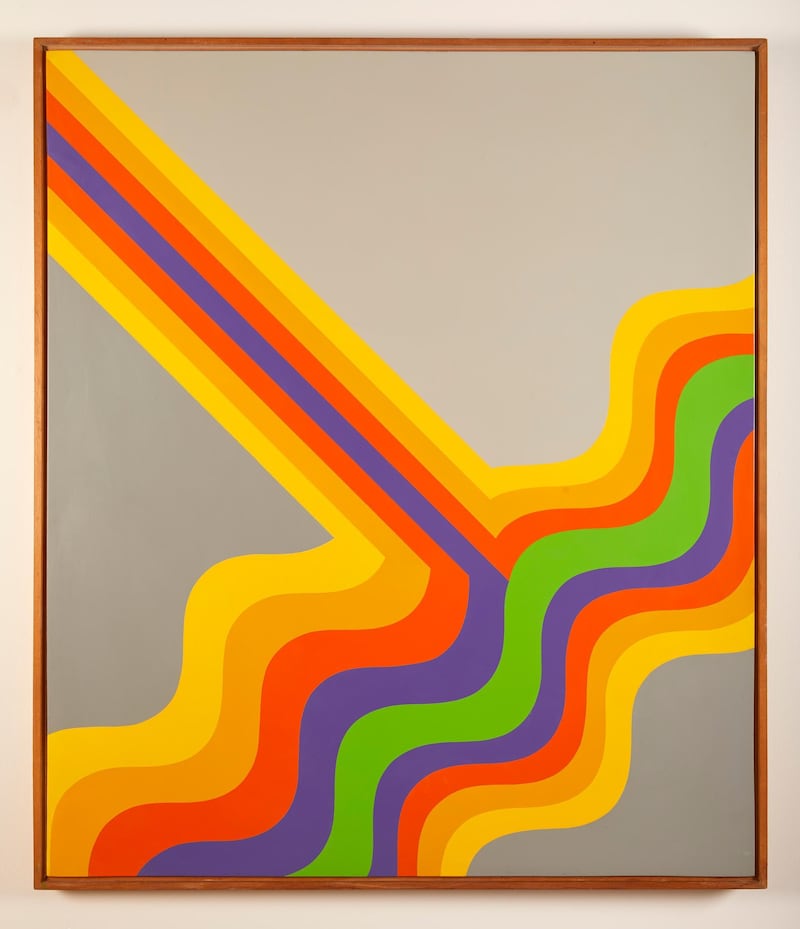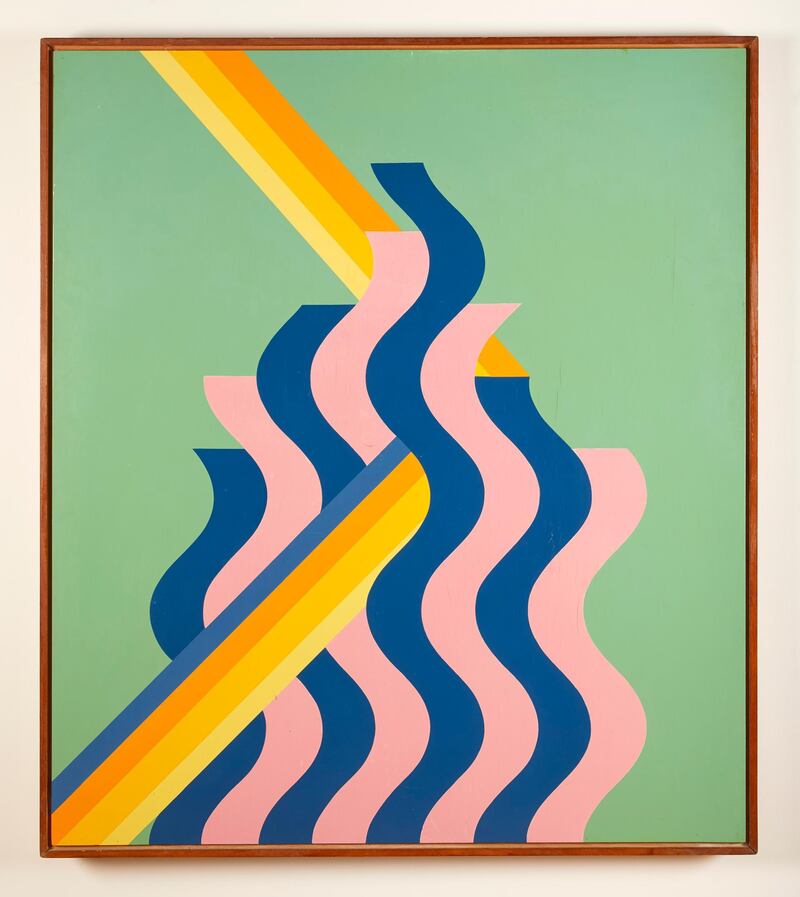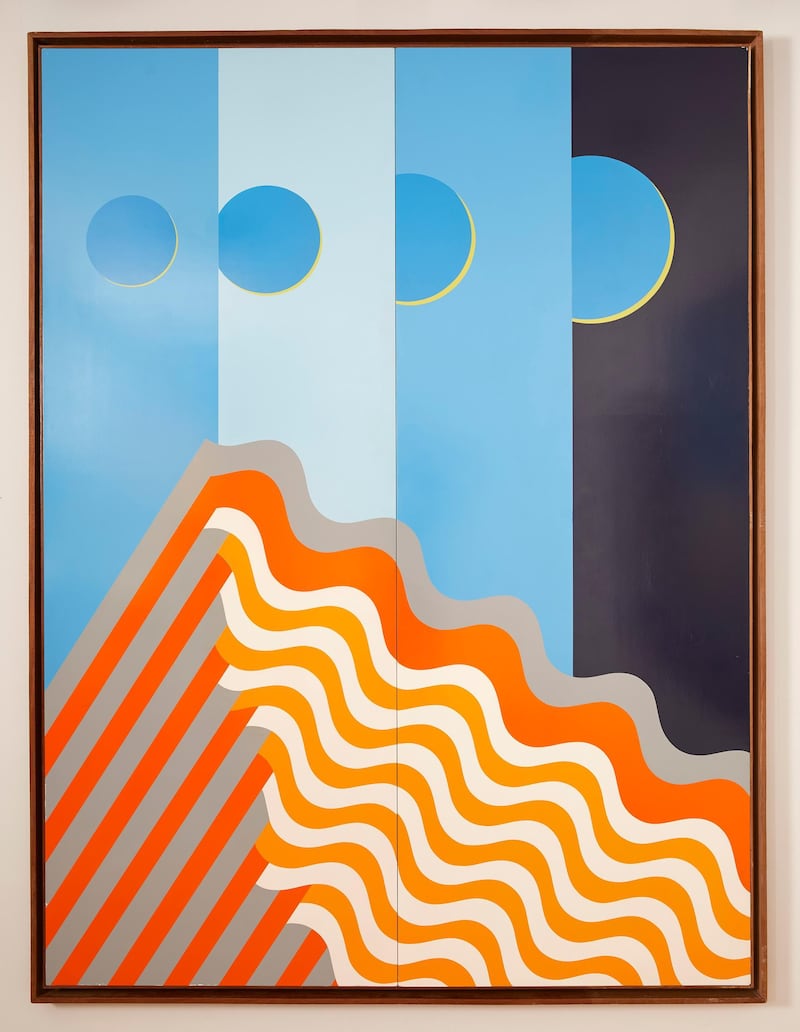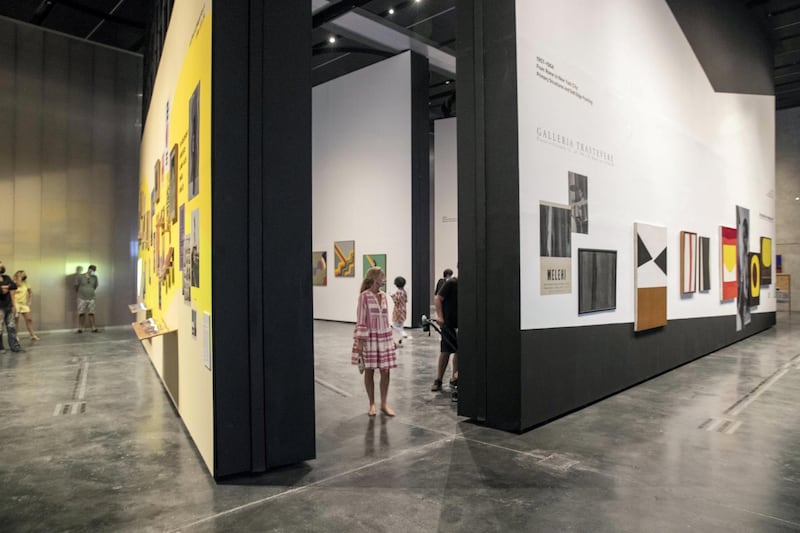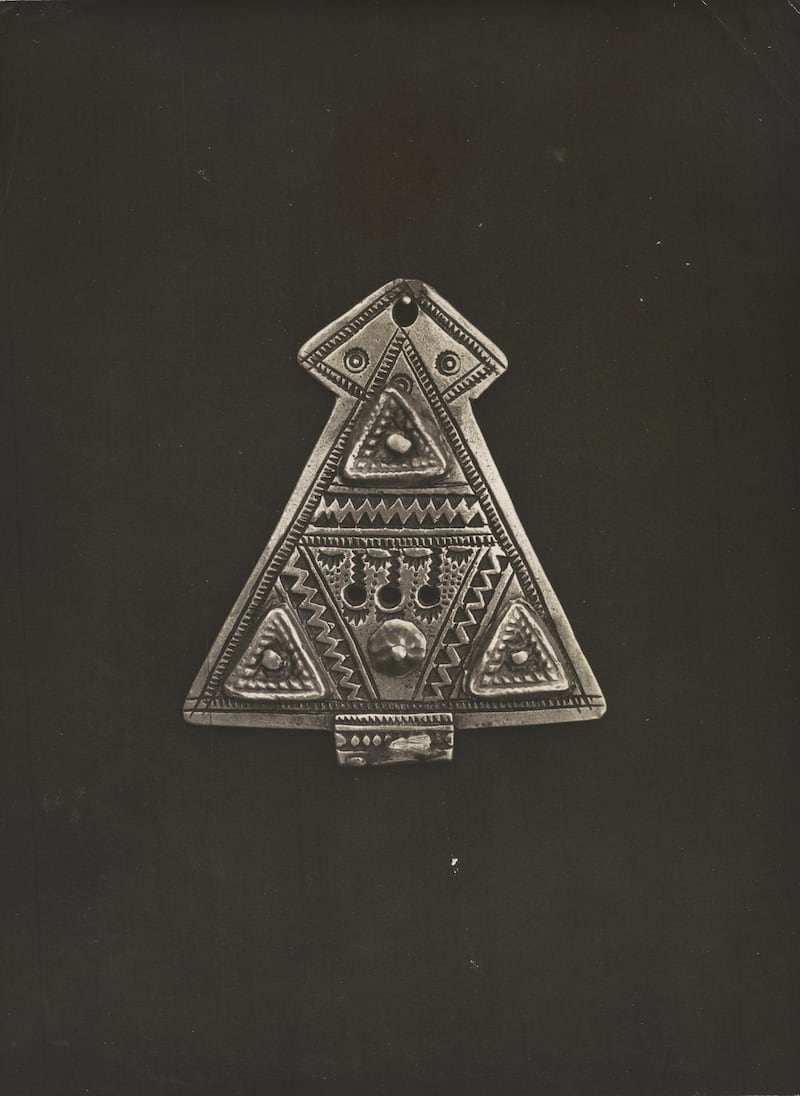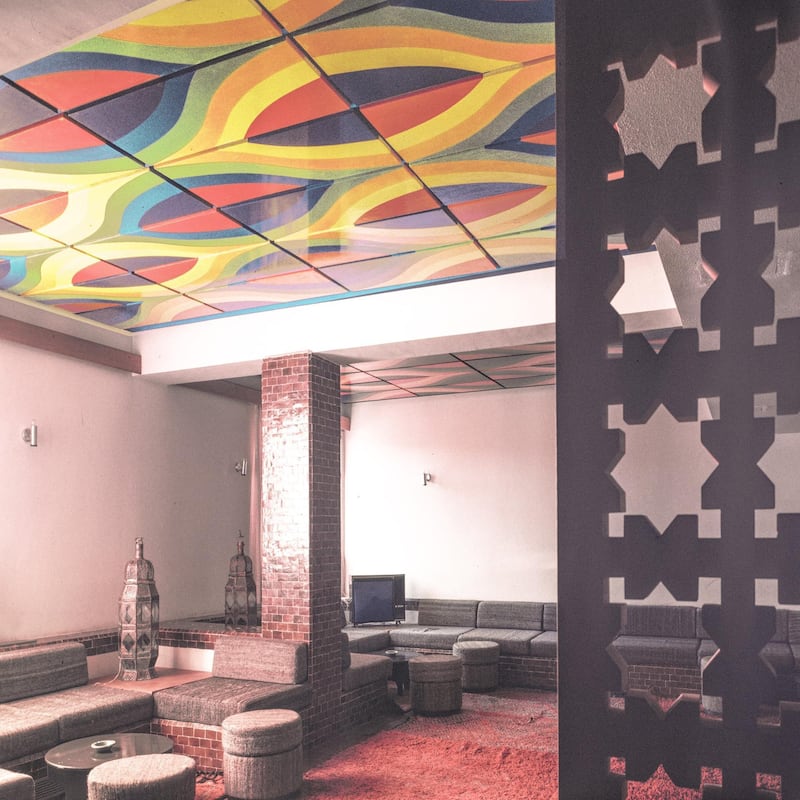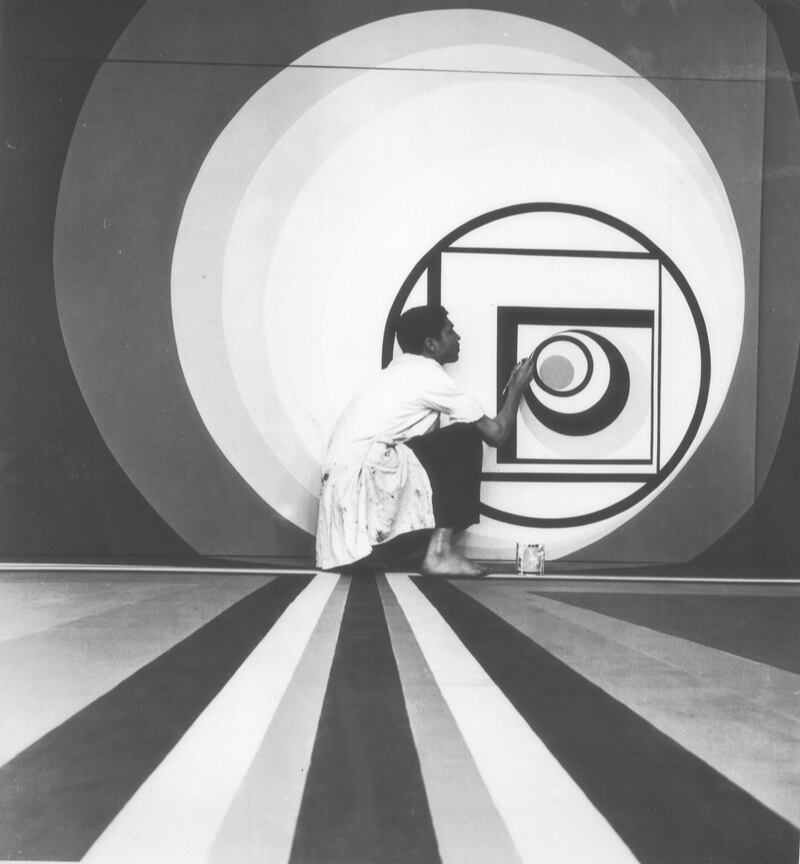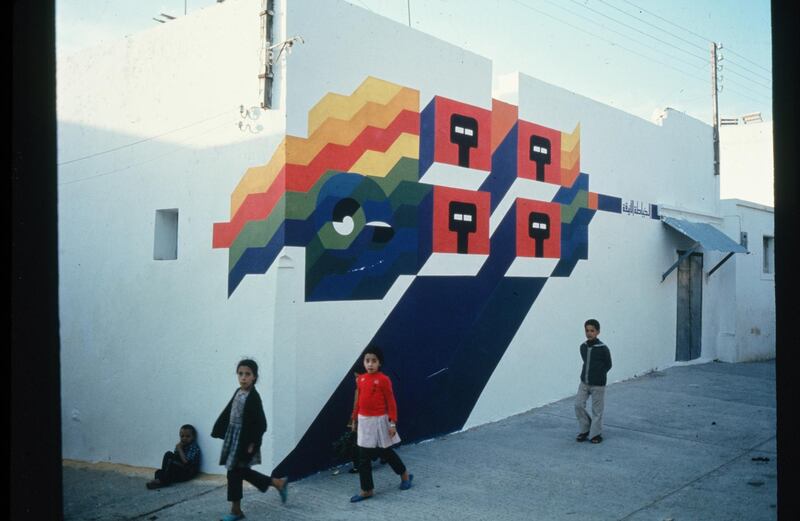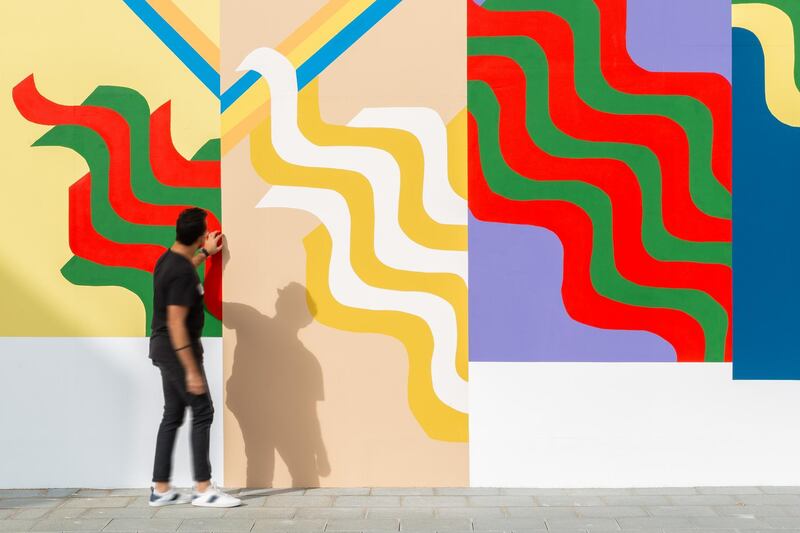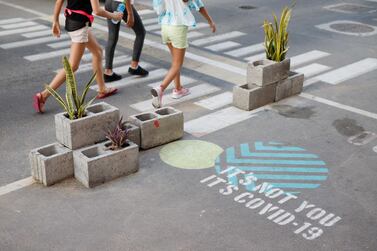To see Mohamed Melehi’s works in a museum exhibition is to see them outside of their natural habitat. His work, produced alongside other artists from the Casablanca Art School, thrived on the streets of Morocco as murals, melded into the interiors of its architecture or found itself in the hands of the people as journal covers and books. The artist, 84, wanted his creations to reach far and wide.
A retrospective, New Waves: Mohamed Melehi and the Casablanca Art School Archives, will be on show at Concrete in Alserkal Avenue until Saturday, October 10. It highlights the history and development of Melehi's practice since his return to his native Morocco after studying abroad in the 1950s and 1960s.
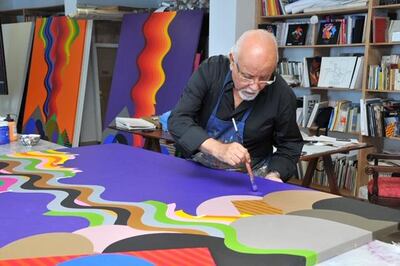
Rife with vibrant works and archival material, and enriched by video and audio guides accessible through QR codes, the show charts Melehi’s world from the 1960s to 1980s. It focuses on his homecoming in 1964, when he began to engage in cultural activism and helped forge Morocco’s postcolonial identity in the wake of its independence from France and Spain in 1956.
The show is a breath of fresh air for most of us who have been homebound and quarantined. A celebration of one of Morocco’s most significant Modernist figures, it takes us through Melehi’s experiments with form and the ethos of his life’s work.
Born in the coastal town of Asilah, Melehi left for Spain when he was 19 to study fine art. He moved to Italy and eventually New York after being awarded a scholarship by the Rockefeller Foundation. Throughout his career, which spans more than half a century, he has filled the roles of painter, photographer, graphic designer, publisher and teacher.
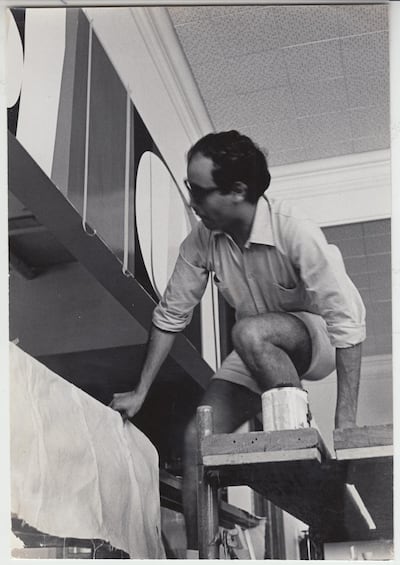
The undulating form of the wave would become his emblematic motif – in Melehi’s hands, it flows sideways, evoking transmission signals, seas and horizons, it ripples and pulses like jazz rhythms or it springs vertically like a flame, all cast in striking colours.
Now in its third iteration, New Waves was first shown at the Mosaic Rooms in London, then at the Museum of Contemporary African Art Al Maaden in Marrakesh last year. It is presented in the UAE by the Alserkal Arts Foundation.
It is curated by Morad Montazami, who has spent years researching Melehi and the Casablanca Art School, and Madeleine de Colnet of Zaman Books & Curating. The depth of Montazami’s knowledge and the care with which the curators have presented it, is evident in the show, which brings in materials that complement our understanding of the artist’s influences.
The first section rewinds to his "pre-wave" period between 1957 and 1964, during which Melehi's earlier angular lines gave way to rounded shapes. He breaks away from the rigid styles of hard edge and geometric abstraction that permeated American art at the time. His 1962 diptych Solar Nostalgia demonstrates his so-called "soft-edge" style and alludes to a nostalgia for sunnier climes with its warm yellows.
In 1963, he became the first North African artist to be included in a group show at the Museum of Modern Art.
Melehi's years in New York, from 1962 to 1964, were formative to his practice. Its jazz scene enticed him, and its cityscape inspired his painting Sleeping Manhattan, in which colourful squares dance against a backdrop of blue like a shimmering skyline.
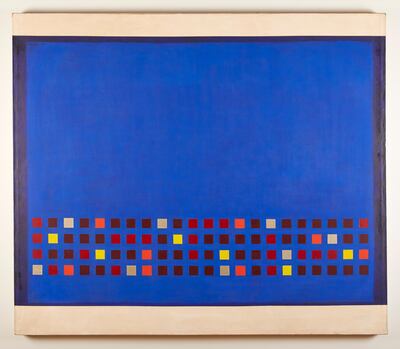
By 1964, the wave became his predominant geometric form, as seen in the second section. That same year, the artist, now living in Morocco, joined the Casablanca Art School, where he taught painting and collage, he worked with artists Farid Belkahia and Mohammed Chabaa.
At this stage, Morocco’s colonial period had recently ended, and the country was experiencing upheaval during the rule of King Hassan II. The 1960s and 1970s witnessed protests and assassination attempts against the monarch.
It was also when the Casablanca Art School flourished with its radical experimentation and artistic collaborations. Theirs was an avant-garde movement that stood against elitist salons and academic systems.
The exhibition’s third section acts as an anchor for these ideas, establishing Melehi’s practice within a larger movement – the rebirth of a national culture unmoored from its colonial past.
As part of their project, he and the school encouraged students to draw from African and Amazigh crafts and decorative arts, such as textiles and jewellery, fusing it with geometric abstraction. The exhibition makes these endeavours more tangible by bringing in objects such as an Amazigh rug and amulets, pendants, leatherwork and baskets, used by Melehi and his students as references.
Melehi and his contemporaries also sought to democratise art. In 1969, for example, they staged the street exhibition Presence Plastique in Marrakesh’s Jemaa el-Fna Square. Later on, in 1978, he founded the Asilah Moussem Festival of the Arts, placing his home town on the country’s cultural map, exhibiting paintings, sculptures and ceramic works and organising workshops for the youth. The festival is held annually to this day.
Eager to deliver art to public spaces, the artist joined forces with architects too, designing interiors for hotels and other buildings.
His affinity with the masses is also evident in his cellulose paintings, for which he used car paint as a way to incorporate materials familiar to the working classes. Three of these radiant paintings from 1975 are in the show.
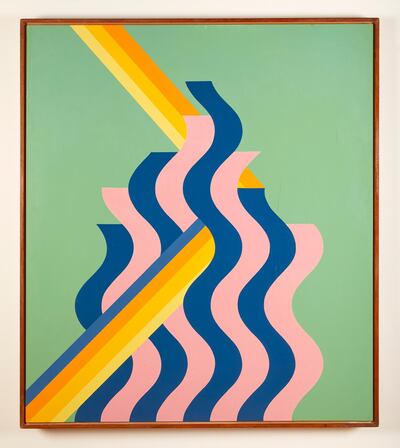
The exhibition continues with his posters and publishing, proving how far his art and activism stretched. He created designs for journals, both the leftist Souffles and cultural Integral, eventually founding his own publishing house Shoof in 1974.
New Waves also includes Melehi’s documentary photography, shown to the public for the first time, which chronicles the modernisation of Morocco.
While the show’s excellence relies on its research, the playfulness and joy found in Melehi’s outdoors works exists outside the bounds of Concrete. Instead, it extends to a mural replica painted by Zayed University students outside of the venue.
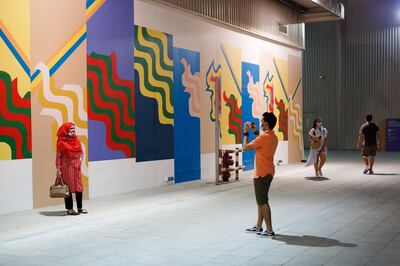
Today, Melehi continues to create. New Waves affixes his place in Arab art and, more importantly, pays respect to his cultural activism. It is a reminder that artists are rarely removed from their societies, that they can reclaim a culture that cuts across class and enriches itself through its history. And it asks us to take part in it too.
New Waves: Mohamed Melehi and the Casablanca Art School Archives runs until Saturday, October 10 at Concrete, Alserkal Avenue, Al Quoz, Dubai. Bookings are advised to ensure entry. More information on their website
